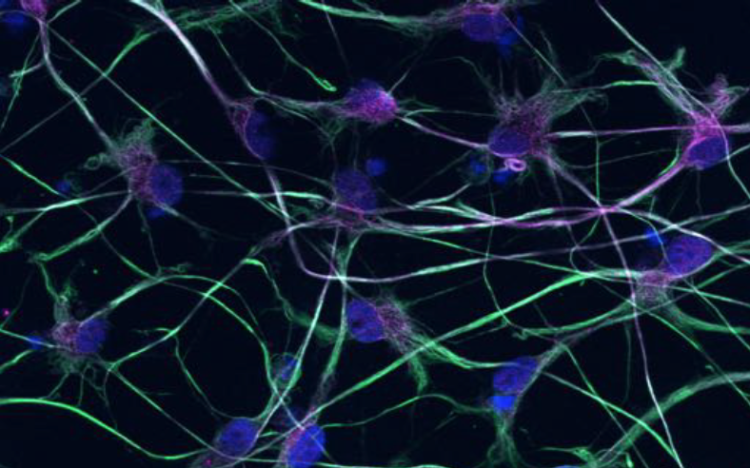Stem cell technology offers new insight into MND

Scientists at the University of St Andrews and the University of Edinburgh have identified a specific type of cell in the human body which can cause motor neurons to fail using stem cell technology.
The joint research, published today (Monday 16 December) in Glia, has shown that glial cells, which normally support neurons throughout the brain and spinal cord, become damaging to motor neurons in Motor Neuron Disease (MND).
By growing different combinations of glial cells and motor neurons together in the lab, the researchers found that glial cells from patients can cause motor neurons from healthy individuals to stop producing the electrical signals they need to control muscles.
The researchers used stem cells derived from patient skin samples to understand why MND causes motor neurons to lose their ability to generate the electrical signals needed to control muscles.
Professor Gareth Miles, Professor of Neuroscience and Head of the School of Psychology and Neuroscience at the University of St Andrews, was one of the lead researchers on the project.
He said: “We are very excited by these new findings which clearly point the finger at glial cells as key players in this devastating disease.
“Interestingly, the negative influence of glial cells seems to prevent motor neurons from fulfilling their normal roles, even before the motor neurons show signs of dying.
“We hope that this new information highlights targets for the development of much-needed treatments and ultimately a cure for MND.”
MND is a progressive neurodegenerative disease that leads to paralysis because it attacks motor neurons, a special type of nerve cell in the brain and spinal cord that generates the electrical signals needed to control all of our movements.
Approximately 5000 people in the UK live with MND at any one time, with approximately six people dying of the disease every day. There is currently no cure for MND and treatment options are limited.
Category Research